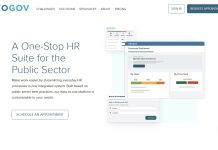Sales training plays a role in the success of any business. It equips sales teams with the skills and knowledge to effectively connect with customers, close deals, and drive revenue growth. However, traditional sales training methods can be burdensome regarding time, cost, and effectiveness. This is where a Learning Management System (LMS) comes into play.
An LMS has the potential to revolutionize how sales training is conducted by offering benefits that can significantly improve the performance of your sales team and boost your line.
What Exactly is an LMS?
An LMS is a software application enabling organizations to create, manage, and deliver training courses. It is a centralized platform for training content assessments, tracking progress, and generating reports. Therefore, Learning Management Systems (LMS) such as Adobe Captivate, iSpring, TalentLMS, and many others provide a range of features that streamline the training process and allow learners to access materials at their pace from anywhere at any time.
The Advantages of Using an LMS for Sales Training
1. Flexible and Convenient Learning
Traditional sales training often requires gathering the sales team in one room for sessions, which can be challenging and time-consuming to organize. Sales professionals can utilize a Learning Management System (LMS) to conveniently access training materials and resources remotely. It allows them to learn quickly and according to their schedule without interfering with regular sales activities. The flexibility provided by an LMS ensures that sales teams can effectively enhance their skills and knowledge.
2. Customize Training Content
One of the advantages of using an LMS is the ability to customize training content based on each sales team’s needs and improvement areas. Whether it’s product knowledge or objection handling techniques, an LMS simplifies the creation and customization of training material to cater to the requirements of each sales team. This personalized approach guarantees that the training provided is relevant and directly applicable to the day-to-day tasks of salespeople.
3. Interactive Features
In contrast to methods like classroom lectures and PowerPoint presentations, which can be dull and fail to engage learners, an LMS offers a variety of interactive features. These include multimedia presentations, quizzes, simulations, and gamification elements that make the learning experience more dynamic and engaging. By incorporating elements into the training process, an LMS assists sales professionals in retaining information, applying their knowledge in real-world scenarios, and staying motivated throughout their learning journey.
4. Continuous Learning and Reinforcement
Rather than being a one-time event, sales training should be a process. An LMS allows organizations to continuously offer learning experiences to their sales teams by providing updated training materials, product information, and sales strategies. Moreover, an LMS can incorporate reinforcement activities like quizzes or case studies to ensure sales professionals retain and apply what they have learned in their daily interactions with customers. This continual reinforcement aids in solidifying knowledge and skills, ultimately leading to sales performance over time.
5. Comprehensive Tracking and Reporting
A common challenge sales training faces is the lack of visibility into the program’s effectiveness. However, an LMS offers tracking and reporting capabilities that enable organizations to monitor and measure the progress of their sales teams. Managers can track team performance, identify areas where knowledge is lacking, and gain insights into the training materials’ effectiveness. By adopting a data-driven approach, organizations can make decisions about their sales training initiatives and make necessary adjustments to improve results.
6. Efficiency in Cost and Time
Historically, implementing sales training programs involved costs such as venue rental fees, travel expenses, and printed training materials.
Furthermore, arranging and conducting in-person training can be time-consuming for the trainers and the sales team. However, by implementing a Learning Management System (LMS), organizations can significantly reduce training expenses and save time for trainers and learners. Automating the training process and eliminating training venues and associated logistics make an LMS a cost-efficient solution for sales training.
7. Remote Onboarding and Scalability
Onboarding sales team members can pose challenges, mainly when they are located in different geographical areas. An LMS simplifies remote onboarding by granting new hires access to training materials from day one. This enables them to quickly familiarize themselves with product knowledge, sales processes, and company policies without requiring face-to-face training sessions. Additionally, an LMS allows organizations to expand their training efforts as the sales team grows, ensuring standardized training throughout the organization.
Conclusion
An LMS has the potential to revolutionize your sales training program by equipping your team with skills and knowledge for effectively boosting revenue. An LMS becomes an asset for any sales organization with its flexibility, customization options, engagement tools, continuous learning opportunities, robust tracking capabilities, cost efficiency measures, and scalability features. Thus, embrace the power of this technology and witness the growth in your sales team’s performance and revenue.



